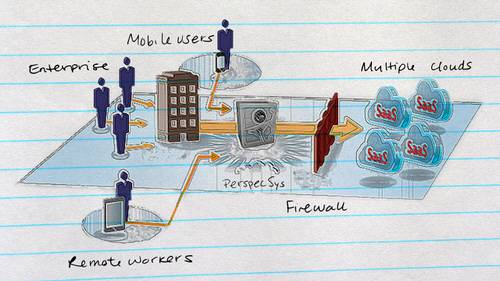
Guest author Jeetu Patel is general manager of EMC Syncplicity.
As enterprise software moves into the world of Software-as-a-Service (SaaS) and consumer technology innovations invade the workplace, how companies evaluate enterprise software vendor changes dramatically in many way. Yet, in some ways, it remains the same.
First, five things that SaaS changes forever:
1. Quality User Experience Drives Adoption
Gone are the days when IT could mandate software solutions with a less than stellar user experience. Today, users will go rogue and adopt consumer apps over enterprise-approved software if it makes them more productive and more mobile. Before you select an enterprise SaaS solution, put yourself in the users’ seat and compare the experience to leading consumer apps. Do they match up? If not, you better keep looking.
2. Simplicity Trumps Feature-Rich
For decades, enterprise software providers have jammed features into their products to meet every IT and user need. The mobile first, cloud-computing world is all about apps that do one thing really, really well. A portfolio of simple, elegant products that are easy to use and easy to implement makes more sense than a complex, comprehensive solution with a long roll-out time and a steep learning curve.
3. Continuous Improvement Is Expected
The 18-month product release cycle is a thing of the past. Today’s users demand constant improvements to the way they work – without radical changes that require retraining or disrupt productivity. And you’ll find it’s a great advantage to have your vendor improve features without having to install any software updates. Ask your SaaS providers how they maintain their products with regular releases that streamline and bring the best to the top. What is their pace of innovation?
4. You’re In The Driver’s Seat
One big change in enterprise software is the shift from perpetual licensing that hits capital expense budgets to subscription-based pricing that hits the operational expense budget. Software in the cloud requires no capital investment, expensive roll out or prolonged training. With relatively low initial investements, if a service doesn’t solve the problem or users don’t adopt it, cancel your subscription and move on.
5. Your Success Is Critical To The SaaS Vendor’s Success
Because there are no huge upfront costs, SaaS vendors have to keep customers happy on an ongoing basis. Enterprises have no problem paying good money for software that delivers value, they just have a problem paying upfront for technology that they are not likely to use.
And now, three fundamental ways your relationship with your vendor does not change.
1. You Still Want To know And Trust Your Provider
No matter how much digitization permeates our lives, people will continue to make large software or Software-as-a-Service purchases from people they know and trust. But this is a marathon, not a sprint. You need to partner with vendor in it for the long haul and are accountable beyond any one product or service.
2. Security, Compliance And Management Still Matter
IT technology restrictions may not seem logical to users, but the need to mitigate risk and comply with requirements remains and enterprise reality. A SaaS provider may be highly secure and have a terrific consumer following, but if it doesn’t meet the compliance bar, it doesn’t belong in the enterprise.
3. You Still Need To Know What’s Coming
SaaS companies that cater to the consumer market often introduce new features by rolling them out to users even before they tell them. Enterprises need predictability and a transparency about upcoming changes. Updates may have important implications for security, compliance, compatibility and workflow. Make sure your SaaS vendors communicate proactively.
Gone are the days when IT could mandate which tools were used where. People want to work as efficiently as possible, anywhere, on any device. That dramatically affects how enterprises choose and buy their software, but some things never change.
Image courtesy of Shutterstock.










